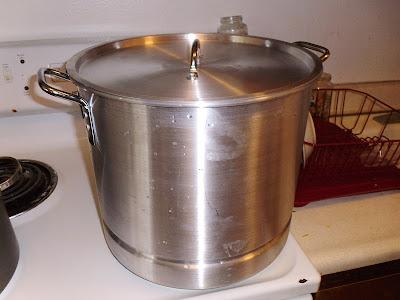 |
| We named her "Big Bertha" |
AHAB'S STOUT
6 lbs Pale Malt Extract
1 lb Dry Malt Extract (For bottling)
4 oz Maltodextrine
1 lb Crystal 40
8 oz Roasted Barley
4 oz Black Patent
4 oz Chocolate Malt
1 oz Colombus Hops (60 minutes)
1 oz Cascade (last 5 minutes)
WLP 002 English Ale Yeast
So here are some pictures from the process. We started off by sanitizing/sterilizing everything we used to contact the wort. We had to buy a bunch of new equipment for the job, including our kettle. We found a 32 quart tamale/seafood steamer that was perfect for our needs.
First thing to do was fill it with water (about 6 gallons) and heat it up to 155°F (since our thermometer was in Celsius, 68°C). We then proceeded to add the grain bag and steep it in the water for 30 minutes.
 |
| The wonderful smelling grains |
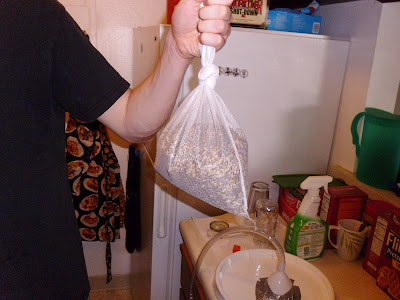 |
| Think of it as a giant teabag |
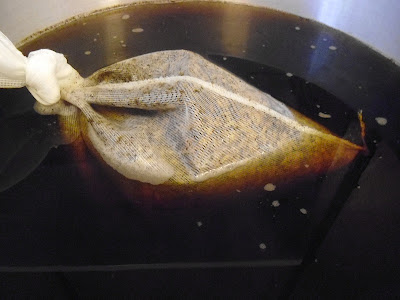 |
| "Tea" |
 |
| Turned our wort into frothy goodness |
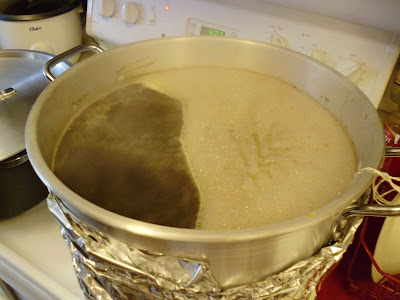 |
| Boiling away |
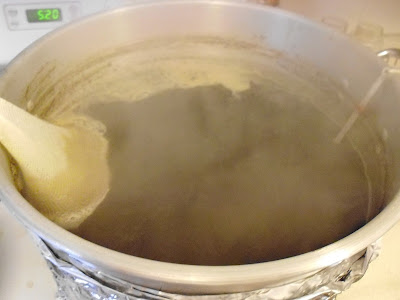 |
| Another teabag! |
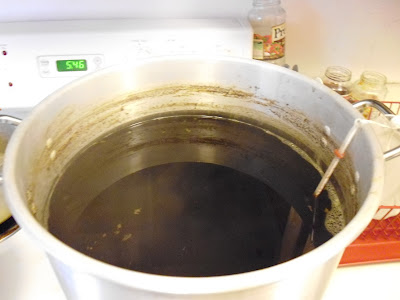 |
| Volume was lost in the process |
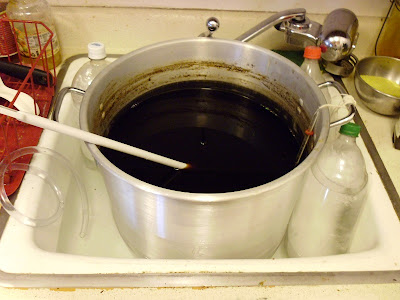 |
| Just chillin. |
 |
| The cat paid us a visit while we were brewing. |
Once chilled down to about 30 degrees C, we poured our wort into the fermenter, adding air to the mix (aeration). The starting gravity of our wort was 1.052, which is what the recipe says it should be. It will sit in primary fermentation for 2 weeks, before it is racked to secondary for a week. Once those 3 weeks are up, it will be bottled, using the dry malt extract as a primer, and will age in the bottle for about a week. Cheers!
 |
| Just in case I get raided (unlikely) |
UPDATE 4/21/13:
Today marked the 14th day of fermentation. Our ale yeast uncharacteristically clung to the bottom of the fermenter during fermentation (ale yeast is top fermenting). Regardless, I got a hydrometer reading of 1.015, meaning the beer is 4.86% alcohol by volume. The beer will sit in secondary fermentation for a week before being bottled.
 |
| A stout heart breaks bad luck |
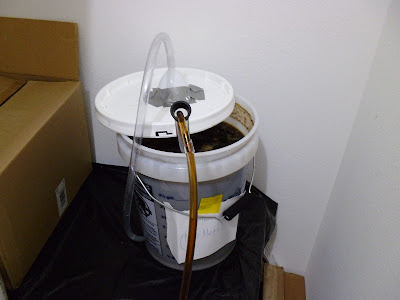 |
| Siphoning to the secondary fermenter. |

No comments:
Post a Comment
Hi folks, please only leave comments relative to the blog post. All spam will be removed and spammers will be blocked.
Note: Only a member of this blog may post a comment.